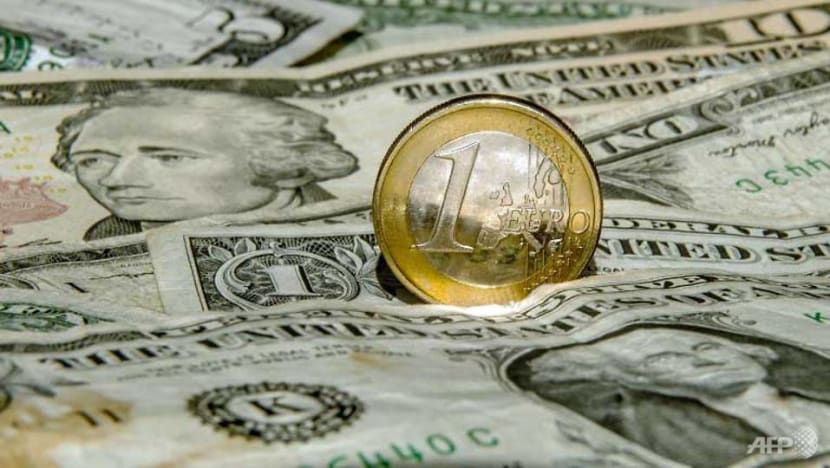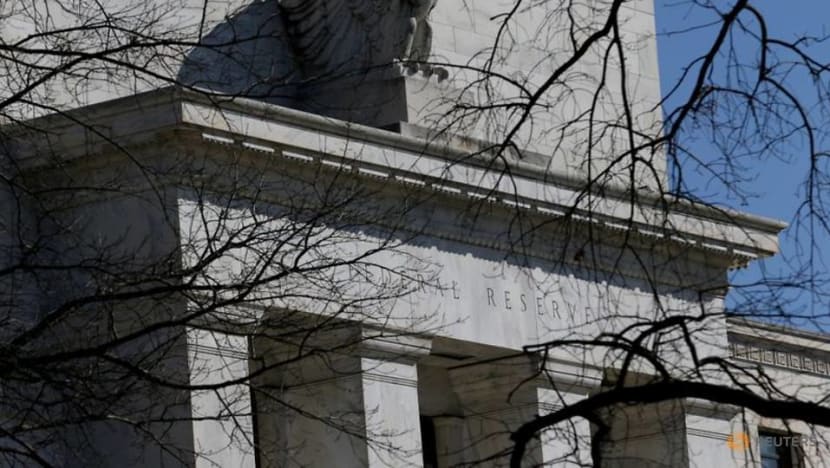commentary Commentary
Commentary: Gold may have lost some of its shine but don’t write it off just yet
Although the price of gold has come down from an all-time high of more than US$2,000 in August, it has the potential to rise, says The Smart Investor CEO David Kuo.

FILE PHOTO: Gold bars are displayed at South Africa's Rand Refinery in Germiston in May 30, 2006. REUTERS/Siphiwe Sibeko/File Photo
SINGAPORE: Gold has been one of the best performing assets this year. It reached an all-time high of US$2,031 an ounce on Aug 7. Since attaining that pinnacle, it has retreated 8 per cent to a three-month low of US$1,859.
However, there are signs that there could be renewed interest in the metal. Its price has recovered above that and, importantly, the movement of the gold price this year has defied conventional wisdom.
GOLD VS EQUITIES
Since the start of the year, an ounce of the yellow metal has risen from $1,514 an ounce to $1,890 today. The 24 per cent rise has outperformed Singapore’s Straits Times Index’s 21 per cent decline, and the US Dow Jones Industrial index’s somewhat flattish performance for the year.
It has also outstripped the pedestrian 4 per cent rise in the MSCI World Index, which is a broad measure of the global stock market’s performance. But it has not quite matched the Nasdaq’s 32 per cent gain this year.
READ: Commentary: Stock market valuations soar while everyone else suffers
READ: Commentary: Singapore's Sea is world's best performing stock. And it can do better
It is unclear, based on this year’s data, whether gold’s outperformance in the last 10 months has been at the expense of equities. Historically, when investors shy away from risk assets such as shares, they tend to seek safe havens such as gold.
But whilst there is a hint of that happening in some markets, the data is not entirely convincing. For instance, it doesn’t entirely explain why gold and the Nasdaq have moved in near lockstep this year.
If we backtrack over the last two years, which was when gold first showed signs of gaining interest, the move from equities to the precious metal is almost as ambiguous.
Since January 2019, gold has risen 54 per cent from around US$1,246 an ounce to its current near-term high.
Over that period, the Dow Jones Industrial Average has climbed 25 per cent, whilst the Nasdaq has surged 38 per cent.

It is not conclusive that there has been a notable switch from equities to gold. But gold has outperformed both the broader US market and the tech-heavy index.
GOLD VS THE GREENBACK
What about the dollar? Gold is reckoned to be negatively correlated to the US dollar. The reasoning is that gold is both priced and traded in US dollars. Consequently, when the US dollar weakens, then it could be argued that it is cheaper to buy and hold gold.
Additionally, from a gold miner’s perspective, they will want more dollars for every ounce of gold that they dig out from the ground because the greenback is worth less.
But it is unclear if that has happened in the way we would expect this year. At the start of the year, the US dollar index stood at 96.5. At that time, gold was worth US$1,514 an ounce. On March 20, the dollar index rose to a high of 102.8.
READ: Commentary: The US dollar will only fall faster and harder
READ: Commentary: The US dollar's position is safe - but only for now
But rather than fall, gold unexpectedly rose to US$1,605 an ounce.
In mid-October, the dollar index had declined to 93.8. Gold rose to US$1,923. The upshot is that whilst the US dollar has only dropped 3 per cent this year, gold has rallied 24 per cent.
The move in the price of gold over the last two years could help to paint a clearer picture.

Since January 2019, the dollar index has dropped from 96.8 to 93.2, which is a 4 per cent decline in value against a basket of currencies that include the euro, the Swiss franc, the Japanese yen, and the Canadian dollar.
Meanwhile, gold’s 48 per cent rise over this period could suggest that investors are concerned that the dollar could fall further.
GOLD VS INTEREST RATES
Apart from equities and the US dollar, gold is also supposed to be negatively correlated to interest rates. The rationale is that there is an opportunity cost when an investor buys gold.
The cost to the investor is the loss of interest income that could have been earned if the cash stayed in the bank.
But the cut in interest rates by many central banks to almost zero has effectively eliminated the opportunity cost.
READ: Commentary: Central banks shouldn’t blindly follow the US Federal Reserve
READ: Commentary: Why that loan to buy that new house and car is cheaper now
At the start of 2020, the US Fed Funds rate was 1.75 per cent. But the key interest rate was cut to between 0 per cent and 0.25 per cent in March.
In September, the US Federal Reserve indicated that it would maintain the rate at close to zero through to 2023.

The Fed is not the only central bank to cut interest rates. Interest rates in the Eurozone, Japan, the UK, Canada and Australia are at historic lows, too.
There does appear to be a good correlation between the rise in the price of gold and the cuts in interest rates by central banks.
GOLD VS INFLATION
Gold is reckoned to be a hedge against inflation because it can help to protect against the decrease in the purchasing power of fiat money. That is because it is priced in US dollars.
So, if the buying power of the dollar should decline, then gold could become more expensive, as each ounce of gold would be worth more.
But there is little indication that inflation is present. In fact, US inflation fell from 2.5 per cent at the start of the year to 0.1 per cent in May.
READ: Commentary: Low interest rates could tempt more to borrow beyond their means
READ: Commentary: America’s mountain of debt is a ticking time bomb
Over that same period, gold jumped from US$1,511 an ounce to US$1,686 an ounce, rather than fall. The rise in the price of gold does not tally with reports of subdued inflation over the last two years, too.
Since 2019, the rate of inflation has moderated from 2 per cent to 1.5 per cent in the US. Meanwhile, gold has climbed 46 per cent.
GOLD VS FEAR
The VIX index, which is sometimes called the “fear index” or the “fear gauge”, is an estimate of volatility in the economy. Whilst it is not a perfect measure of the level of fear in markets, it can provide a way to look at how investors might view the future.
When the VIX index is high, it can be an indication that they perceive stock-market investments to be uncertain. But when it is low, they expect share prices to be less volatile.

Greater uncertainty in the stock markets can be a boon for gold prices since investors may look for safer assets like gold to put their money in.
In March, the VIX spiked to a high of 85. It coincided with the time when COVID-19 had spread to many parts of the world.
READ: Commentary: Why investors who are ‘buying the dip’ are taking a big risk
READ: Commentary: Choice for US voters concerned about economic prospects could not be clearer
Gold prices spiked from a low of US$1,474 to US$1,617 an ounce before rising to a high for the year as the scale and fear over the pandemic disruption started to unfold.
Even though the VIX has returned to more normal levels of around 25, gold prices still remain elevated.
WHERE NEXT FOR GOLD?
There is no single reason that we can identify for gold prices reaching their all-time high this year. Instead, the price rise appears to have been driven by a multitude of factors.
These include concerns over the ability of companies to recover to pre-pandemic levels and the unprecedented level of support provided by central banks that could devalue paper money, especially the dollar.
There are also concerns that central banks that have pledged to keep interest rates lower for longer could do so even if it might be at the expense of controlling inflation.

The twin concern of low interest rates and higher inflation could have helped to propel the price of gold.
Finally, fear of the unknown and a desire for households to preserve their wealth could have been another driver of gold’s rise.
READ: Commentary: Investing in markets? Why future gains lie in tech stocks
READ: Commentary: Why gold is still a safe haven in times of crisis
It is unclear how long the five drivers of gold prices will remain in place.
If they do, then the story behind gold’s rise in 2020 is unlikely to end.
But if any one of the drivers should be removed, then this could be as good as it gets for gold for now.
David Kuo is the co-founder of The Smart Investor and previously the CEO of the Motley Fool Singapore.















